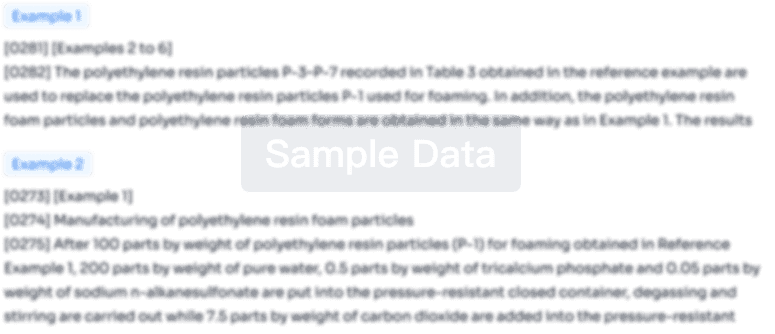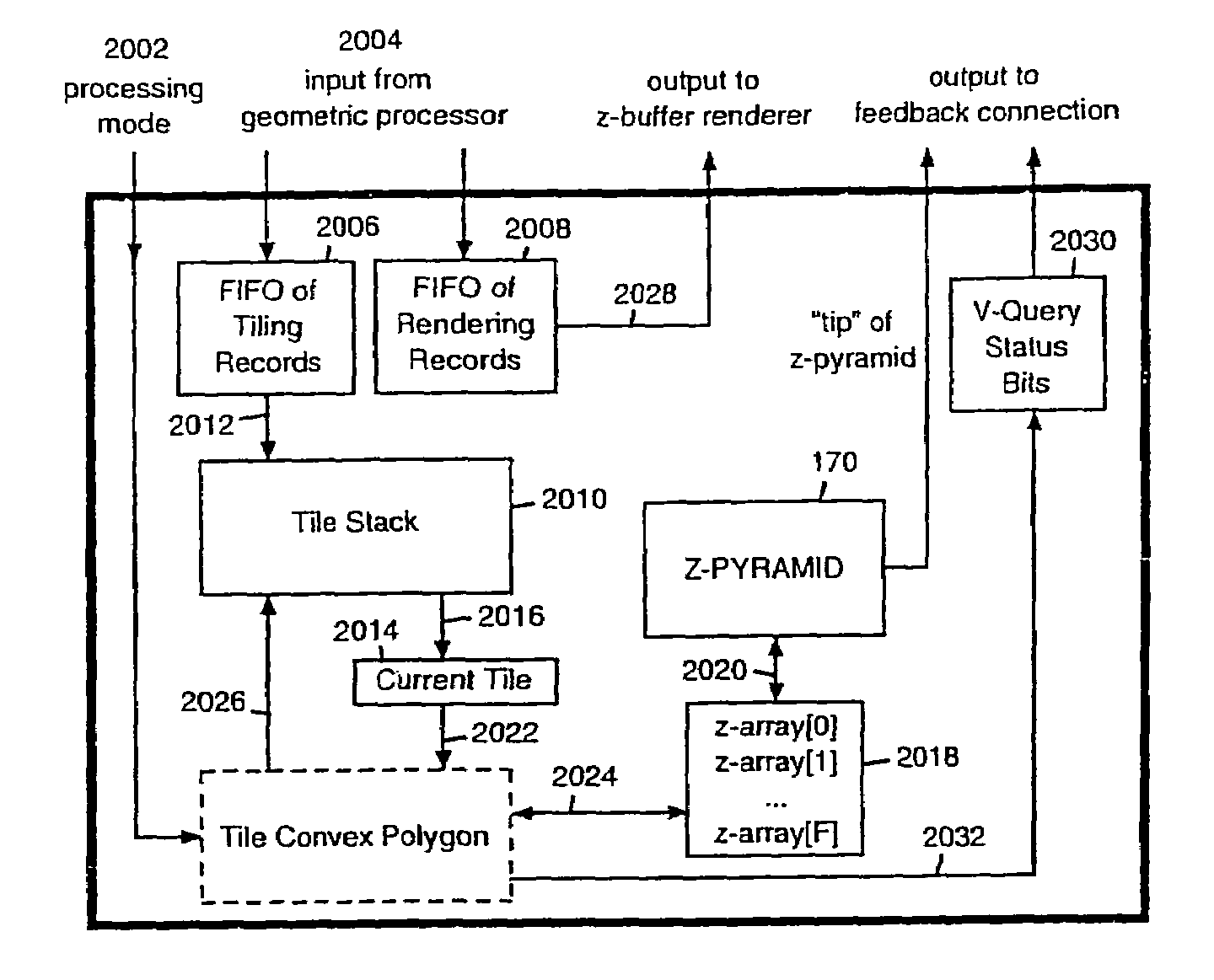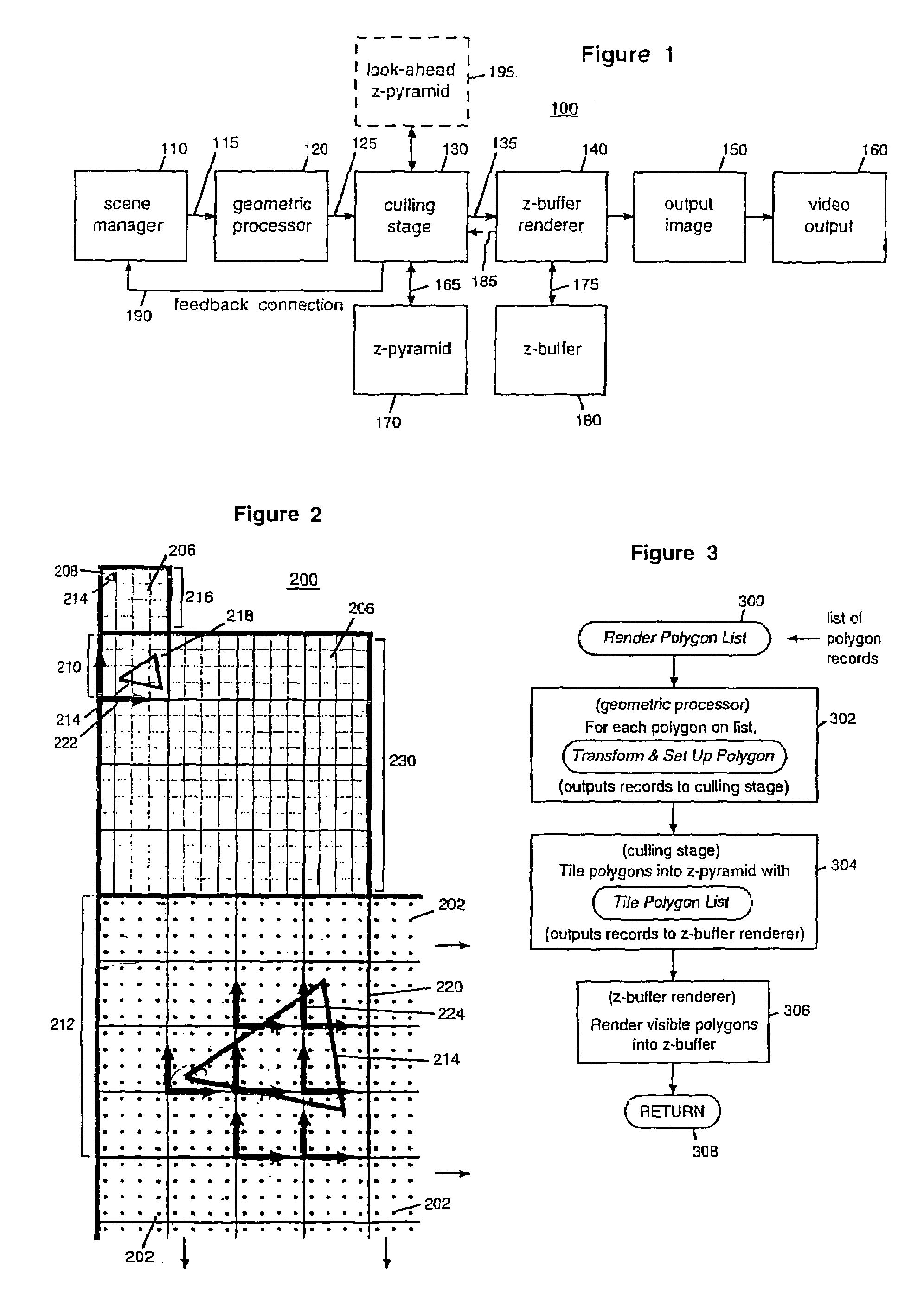System, method and computer program product for geometrically transforming geometric objects
a geometric object and computer program technology, applied in the field of computer graphics, can solve the problems of reducing the frame rate in approximate, affecting the processing speed of geometric objects, so as to reduce the amount of geometric and image information, improve performance, and reduce memory and bus traffic
Inactive Publication Date: 2008-05-20
NVIDIA CORP
View PDF15 Cites 33 Cited by
- Summary
- Abstract
- Description
- Claims
- Application Information
AI Technical Summary
Benefits of technology
[0042]Briefly, the preferred embodiment separates culling of occluded geometry from rendering of visible geometry. According to the invention, a separate culling stage receives geometry after it has been transformed, culls occluded geometry,
Problems solved by technology
There is presently an obstacle to achieving high performance in processing densely occluded scenes.
When rendering densely occluded scenes with such systems, the bandwidth of the rasterizer=s image memory is often a performance bottleneck.
Consequently, frame rate decreases in approximate proportion to depth complexity, resulting in poor performance for densely occluded scenes.
A second potential bottleneck is the bandwidth of the bus connecting the host and the rasterizer, since the description of the scene may be very complex and needs to be sent on this bus to the rasterizer every frame.
Consequently, bandwidth limitations can become relatively more acute over time.
All of these methods improve performance, but they involve additional expense, and they have other limitations.
Considering cost first, these methods are relatively expensive which precludes their use in low-end PC and consumer systems that are very price sensitive.
Such a system cannot be highly interleaved because a full-screen image requires only a few memory chips (one 16 megabyte memory chip can store a 1024 by 1024 by 16 bit image), and including additional memory chips is too expensive.
Providing smart memory, such as FBRAM
Method used
the structure of the environmentally friendly knitted fabric provided by the present invention; figure 2 Flow chart of the yarn wrapping machine for environmentally friendly knitted fabrics and storage devices; image 3 Is the parameter map of the yarn covering machine
View moreImage
Smart Image Click on the blue labels to locate them in the text.
Smart ImageViewing Examples
Examples
Experimental program
Comparison scheme
Effect test
 Login to View More
Login to View More PUM
 Login to View More
Login to View More Abstract
Z-buffer rendering of three-dimensional scenes is made more efficient through a method for occlusion culling by which occluded geometry is removed prior to rasterization. The method uses hierarchical z-buffering to reduce the quantity of image and depth information that needs to be accessed. A separate culling stage in the graphics pipeline culls occluded geometry and passes visible geometry on to a rendering stage. The culling stage maintains its own z-pyramid in which z-values are stored at low precision (e.g., in 8 bits). The efficiency of hierarchical z-buffering is improved through hierarchical evaluation of line and plane equations.
Description
[0001]The present application is a divisional of a parent application filed Sep. 8, 2003 under Ser. No. 10 / 658,224 which, in turn, is a divisional of a parent application filed Jul. 10, 2002 under Ser. No. 10 / 193,400 now U.S. Pat. No. 6,768,487 which, in turn, is a divisional of a parent application filed Jul. 22, 1998 under Ser. No. 09 / 121,317 now U.S. Pat. No. 6,480,205, which are all incorporated herein by reference.BACKGROUND OF THE INVENTION[0002]The invention, generally, relates to computer graphics and more particularly, to a new and improved method and apparatus for rendering images of three-dimensional scenes using z-buffering.[0003]Rendering is the process of making a perspective image of a scene from a stored geometric model. The rendered image is a two-dimensional array of pixels, suitable for display.[0004]The model is a description of the objects to be rendered in the scene stored as graphics primitives, most typically as mathematical descriptions of polygons together ...
Claims
the structure of the environmentally friendly knitted fabric provided by the present invention; figure 2 Flow chart of the yarn wrapping machine for environmentally friendly knitted fabrics and storage devices; image 3 Is the parameter map of the yarn covering machine
Login to View More Application Information
Patent Timeline
 Login to View More
Login to View More IPC IPC(8): G06T15/00G06T15/40
CPCG06T15/405
Inventor GREENE, EDWARD COLTONHANRAHAN, PATRICK MATTHEW
Owner NVIDIA CORP
Features
- R&D
- Intellectual Property
- Life Sciences
- Materials
- Tech Scout
Why Patsnap Eureka
- Unparalleled Data Quality
- Higher Quality Content
- 60% Fewer Hallucinations
Social media
Patsnap Eureka Blog
Learn More Browse by: Latest US Patents, China's latest patents, Technical Efficacy Thesaurus, Application Domain, Technology Topic, Popular Technical Reports.
© 2025 PatSnap. All rights reserved.Legal|Privacy policy|Modern Slavery Act Transparency Statement|Sitemap|About US| Contact US: help@patsnap.com



